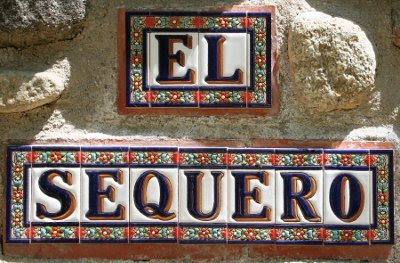El Sequero is relatively rich in plant life, and this despite the fact that numerous generations of goats, sheep, cows and well, or otherwise, meaning humans have tried their best to eat, cut or burn down everything within physical reach.
The other day I serendipitously identified one of the plants that grows on the property. The locals had mentioned it a numerous occasions, always in a surprised tones. Personally I had considered it a bit of a weed, tough as nails, unforgiving "leaves" (it turns out they are modified stems) with sharp spikes that reminded you of the advantages of wearing gloves when pottering about the garden and nothing except it's evergreen nature, in even those harshest moments of the year, to recommend it. I had half played around with the idea of planting it as a low growing hedge and half with pulling it out mercilessly whenever I came across it.

The discovery was made over breakfast while browsing through my copy of "Guide to trees and shrubs of the Iberian peninsula and the Baleares Islands". Eureka! The shrub is known as Butcher's broom (Ruscus aculeatus) and it has some very interesting medicinal properties, apart from being almost indestructible. Those who want to learn more about this shrub can follow this link http://www.botanical.com/botanical/mgmh/b/brobut71.html
I now see it in a different light and have started transplanting a few specimens to areas where it can grow unimpeded (ie where I won't run over by the lawn mower and where Maria Jose won't cut it down with the brush cutter, to form a low hedge.






